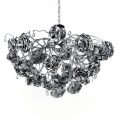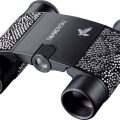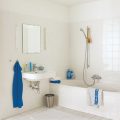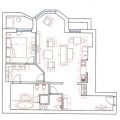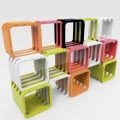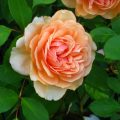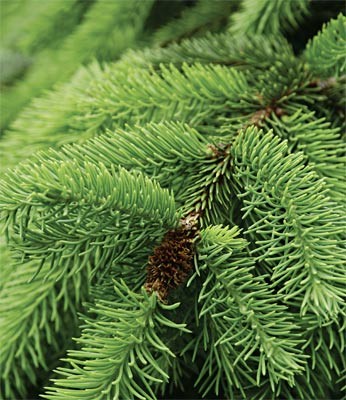 Fir trees on the plotThe desire to see the garden in winter andin the summer with one color, namely green, is quite understandable. And the decision to plant more conifers in it is natural. Now there are all the opportunities for this: the choice of spruce, fir, pine, juniper, thuja of all shades, shapes, sizes and species is huge. But what should you prefer? The main advice is never buy conifers spontaneously, at first impression. Try to find out as much as possible about the chosen plant: what conditions it prefers, whether the care is too difficult, how it tolerates the cold. This question, oddly enough (aren't snow-covered spruce trees a symbol of Russian winter?), should be put first. Many species and varieties of conifers in winter require insulation of the root system (cypress) and protection from sunburn (thuja, blue spruce f. conica, cypress). If you don't take care of this, the garden will be decorated in winter not by the green shaggy paws of slender trees, but by swaddled "mummies". It is equally important to find out what size the adult plant will reach. What if it is a forty-meter cedar? At first, the seedlings grow slowly, but then, rushing upward and spreading out in width, they will begin to shade and oppress neighboring plants and suffer themselves. By the way, if you have settled on dwarf conifers, find out whether you are offered a slow-growing, but not at all low-growing plant as such. Thus, the blunt cypress "Nana Gracilis" grows only up to half a meter in fifteen years, but its growth does not stop there. Placement on the site
Fir trees on the plotThe desire to see the garden in winter andin the summer with one color, namely green, is quite understandable. And the decision to plant more conifers in it is natural. Now there are all the opportunities for this: the choice of spruce, fir, pine, juniper, thuja of all shades, shapes, sizes and species is huge. But what should you prefer? The main advice is never buy conifers spontaneously, at first impression. Try to find out as much as possible about the chosen plant: what conditions it prefers, whether the care is too difficult, how it tolerates the cold. This question, oddly enough (aren't snow-covered spruce trees a symbol of Russian winter?), should be put first. Many species and varieties of conifers in winter require insulation of the root system (cypress) and protection from sunburn (thuja, blue spruce f. conica, cypress). If you don't take care of this, the garden will be decorated in winter not by the green shaggy paws of slender trees, but by swaddled "mummies". It is equally important to find out what size the adult plant will reach. What if it is a forty-meter cedar? At first, the seedlings grow slowly, but then, rushing upward and spreading out in width, they will begin to shade and oppress neighboring plants and suffer themselves. By the way, if you have settled on dwarf conifers, find out whether you are offered a slow-growing, but not at all low-growing plant as such. Thus, the blunt cypress "Nana Gracilis" grows only up to half a meter in fifteen years, but its growth does not stop there. Placement on the site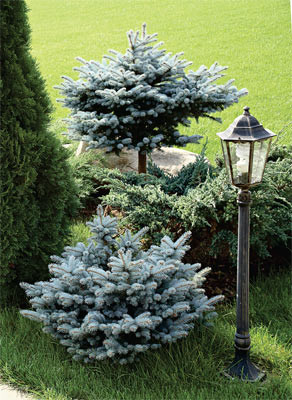 Pines on the siteIt is from conifers that manyExperts advise to start garden planning: create a kind of skeleton from them, and then plant other plants. Do not rush with planting, try to imagine how the garden will look in ten, twenty years. When placing seedlings, keep in mind that most conifers are light-loving, but you can also find shade-tolerant ones (balsam fir, single-color fir). If necessary, select plants that are resistant to dust and smoke (prickly spruce, larches), drought-resistant (Lawson cypress). Soils, fertilizing Conifers are undemanding to soils and can put up with any, with the exception of excessively wet and excessively dry, swampy and highly saline. The most suitable will be light sandy loam or loamy, well-drained, slightly acidic. Fertilizing, and moderate, is required only for young or weakened plants. It is better to use mineral fertilizers for this, especially for conifers. Never add fresh manure. And be especially careful when feeding nitrogen fertilizers to plants in containers, so as not to stimulate their growth. Use On a large area, you can lay out a larch alley, plant rows of blue spruce (Pinus prickly f. blue), as a solitary choose a tall silver spruce (Pinus communis f. silver) or fir. A solitary tree should be open to views from all sides, "subordinate" the surrounding space, stand out against the background of other crops. Many coniferous plants make excellent hedges. They can only mark the boundaries of the garden - or become an insurmountable barrier, more reliable than any fence. Naturally growing hedges are made from conifers that do not tolerate pruning well. But, growing, such a fence will take up quite a lot of space and can oppress other plants planted too close. Fir, thuja, cypress are used for trimmed hedges. They are more compact, since the growth of the crown of conifers is limited by pruning. The "living" wall protects from wind and dust, dampens street noise, creates a feeling of security and privacy. In winter, it is as dense and impassable as in summer. But to grow it, for example, from thuja, it will take 6-10 years. Bushy and creeping forms of juniper, dwarf pines, natural and picturesque, as in nature, are suitable for planting on steep slopes, embankments. Dwarf forms of fir, cypress, spruce, thuja, low spherical plants of mountain pine look great on rocky hills. If you choose slow-growing conifers, you can create a landscape that will maintain a permanent appearance for a long time. While maintaining the main permanent core of conifers, the picture is complemented by other plants. Often they help to hide the resulting defects, for example, when the branches of dwarf pines become bare, they can be covered with heather. By the way
Pines on the siteIt is from conifers that manyExperts advise to start garden planning: create a kind of skeleton from them, and then plant other plants. Do not rush with planting, try to imagine how the garden will look in ten, twenty years. When placing seedlings, keep in mind that most conifers are light-loving, but you can also find shade-tolerant ones (balsam fir, single-color fir). If necessary, select plants that are resistant to dust and smoke (prickly spruce, larches), drought-resistant (Lawson cypress). Soils, fertilizing Conifers are undemanding to soils and can put up with any, with the exception of excessively wet and excessively dry, swampy and highly saline. The most suitable will be light sandy loam or loamy, well-drained, slightly acidic. Fertilizing, and moderate, is required only for young or weakened plants. It is better to use mineral fertilizers for this, especially for conifers. Never add fresh manure. And be especially careful when feeding nitrogen fertilizers to plants in containers, so as not to stimulate their growth. Use On a large area, you can lay out a larch alley, plant rows of blue spruce (Pinus prickly f. blue), as a solitary choose a tall silver spruce (Pinus communis f. silver) or fir. A solitary tree should be open to views from all sides, "subordinate" the surrounding space, stand out against the background of other crops. Many coniferous plants make excellent hedges. They can only mark the boundaries of the garden - or become an insurmountable barrier, more reliable than any fence. Naturally growing hedges are made from conifers that do not tolerate pruning well. But, growing, such a fence will take up quite a lot of space and can oppress other plants planted too close. Fir, thuja, cypress are used for trimmed hedges. They are more compact, since the growth of the crown of conifers is limited by pruning. The "living" wall protects from wind and dust, dampens street noise, creates a feeling of security and privacy. In winter, it is as dense and impassable as in summer. But to grow it, for example, from thuja, it will take 6-10 years. Bushy and creeping forms of juniper, dwarf pines, natural and picturesque, as in nature, are suitable for planting on steep slopes, embankments. Dwarf forms of fir, cypress, spruce, thuja, low spherical plants of mountain pine look great on rocky hills. If you choose slow-growing conifers, you can create a landscape that will maintain a permanent appearance for a long time. While maintaining the main permanent core of conifers, the picture is complemented by other plants. Often they help to hide the resulting defects, for example, when the branches of dwarf pines become bare, they can be covered with heather. By the way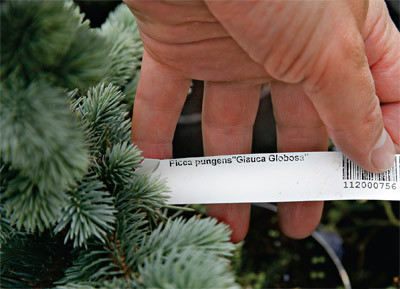 If you have currants on your plot,Refrain from buying Weymouth pine (Pinus strobus). Moreover, you should also ask your neighbors not to plant it. This pine is a source of columnar rust spores, which seriously affects currants.* Conifers include plants with needle-shaped (spruce, pine), scaly (cypress, thuja) or narrow-lanceolate (fir, yew) leaves.* All conifers, except for larch, are evergreen. Their leaves (needles) do not fall at one specific time, but gradually, and it seems that this does not happen at all. In reality, pine needles live for 2-3 years, fir - up to 5 years, yew - up to 10, spruce - up to 12 years or more.
If you have currants on your plot,Refrain from buying Weymouth pine (Pinus strobus). Moreover, you should also ask your neighbors not to plant it. This pine is a source of columnar rust spores, which seriously affects currants.* Conifers include plants with needle-shaped (spruce, pine), scaly (cypress, thuja) or narrow-lanceolate (fir, yew) leaves.* All conifers, except for larch, are evergreen. Their leaves (needles) do not fall at one specific time, but gradually, and it seems that this does not happen at all. In reality, pine needles live for 2-3 years, fir - up to 5 years, yew - up to 10, spruce - up to 12 years or more.

Making Money with Desserts: Success Stories
Evgeniya Polischuk (Fedutinova) instagram:@evgeniyafedutinovavk.com/janeshomebaking– It all started with baking for family and friends. Gradually, I started posting photos of my baked goods on Instagram – and orders started coming in. I made my first custom-made cake on October 13, 2014, and a little earlier I started making macaroons and cupcakes. You could say that the business “found me”, I am very […]

Soups are cold recipes with photos
Cold cucumber soup with yogurt and lemonsorbet from the chef of the restaurant La Taverna Alexander Zhurkin Photo: Getty Images Ingredients: Plain yoghurt – 125 g Cucumber – 150 g Lemon/lime sorbet – 50 g Cocktail shrimp – 24 g Fresh ginger juice – 1 g Lime juice – 5 g Fresh orange juice – 5 g Parsley – 1 g Pink pepper – 1 g Watercress – […]

barbeque kebab
Pork tenderloin in glaze Photo:Dmitry Bayrak/dbstudioPreparation time: 20 minutes + marinating time.Calories: 454 kcal per serving.For 4 servings: 4 pork tenderloins (approximately 300 g each), 1 onion, 2 cloves of garlic, 1 tsp. lemon zest, 1 tsp. lemon juice, a pinch of ground cumin, coriander and turmeric, 1 tbsp. vegetable […]

Pierre Duacan: dietary recipes: Ducane diet
Beetroot soup Photo:Season’S, Luxury Hotels RepresentationYou will need:· Boiled beetroot – 60 g· Fresh cucumbers – 20 g· Red radish – 20 g· Green onions – 10 g· Egg – 1 pc.· Drinking mineral water – 200 g· Salt – 1 gPreparation:· Boil the egg and beetroot.· Grate the cucumbers, radish and part of the beetroot. Put everything […]
